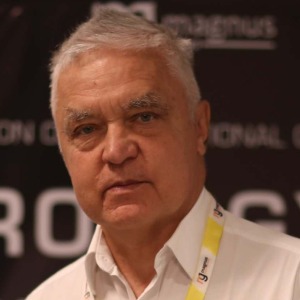Neural Computing
A subset of artificial intelligence, emulates the function of the human brain through interconnected nodes known as neurons. These nodes, analogous to biological neurons, process and transmit information. Neural networks consist of layers of these nodes, each layer performing specific operations on the input data and passing the result to the next layer. The network's structure allows it to learn patterns and relationships within the data, making it adept at tasks such as classification, prediction, and pattern recognition. One of the key features of neural computing is its ability to learn from examples. Through a process called training, neural networks adjust their internal parameters to minimize the difference between their predicted outputs and the actual targets. This iterative learning process enables neural networks to improve their performance over time, making them adaptable to various tasks and datasets. Neural computing finds applications across diverse domains, including image and speech recognition, natural language processing, medical diagnosis, financial forecasting, and autonomous vehicles. In image recognition, for instance, convolutional neural networks (CNNs) excel at identifying objects and features within images, revolutionizing fields like computer vision. Recurrent neural networks (RNNs) are proficient in processing sequential data, making them suitable for tasks like speech recognition and language translation. Despite their effectiveness, neural networks have certain limitations. They require large amounts of data for training and can be computationally expensive, particularly for complex architectures. Additionally, interpreting the decisions made by neural networks, often referred to as the "black box" problem, remains a challenge, especially in critical applications where transparency and accountability are crucial. Continual advancements in neural computing, fueled by research in machine learning, computational neuroscience, and hardware innovation, promise to overcome these challenges and unlock new possibilities in artificial intelligence. As neural networks become more sophisticated and accessible, they are poised to play an increasingly integral role in reshaping industries and driving innovation in the years to come.

Ken Ware
NeuroPhysics Therapy Institute, Australia
Robert B Slocum
University of Kentucky HealthCare, United States
Yong Xiao Wang
Albany Medical College, United States
W S El Masri
Keele University, United Kingdom
Jaqueline Tuppen
COGS Club, United Kingdom
Milton Cesar Rodrigues Medeiros
Hospital Santa Casa de Arapongas, Brazil




Title : Perception and individuality in patient cases identifying the ongoing evolution of Myalgic Encephalomyelitis/Chronic Fatigue Syndrome (ME/CFS)
Ken Ware, NeuroPhysics Therapy Institute, Australia
Title : Narrative medicine: A communication therapy for the communication disorder of Functional Seizures (FS) [also known as Psychogenic Non-Epileptic Seizures (PNES)]
Robert B Slocum, University of Kentucky HealthCare, United States
Title : Rabies: Challenges in taming the beast
Alan C Jackson, University of Calgary, Canada
Title : Neuro sensorium
Luiz Moutinho, University of Suffolk, United Kingdom
Title : Traumatic Spinal Cord Injuries (tSCI) - Are the radiologically based “advances” in the management of the injured spine evidence-based?
W S El Masri, Keele University, United Kingdom
Title : Personalized and Precision Medicine (PPM), as a unique healthcare model through biodesign-driven biotech and biopharma, translational applications, and neurology-related biomarketing to secure human healthcare and biosafety
Sergey Victorovich Suchkov, N.D. Zelinskii Institute for Organic Chemistry of the Russian Academy of Sciences, Russian Federation